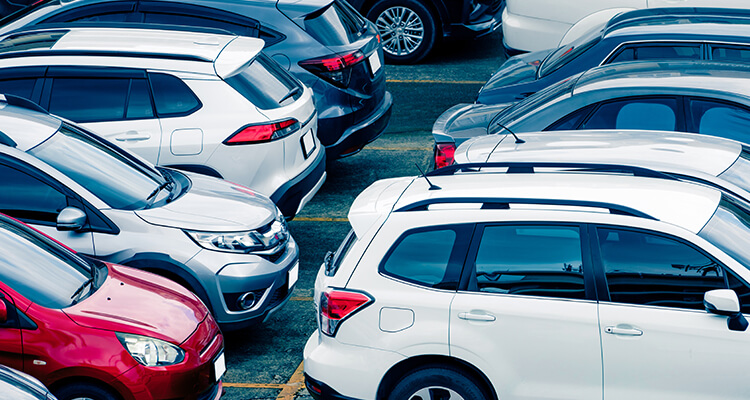Are you perhaps looking for a great SUV to buy? You can read further, and find out which SUVs belong to the top 10 on sale in South Africa, according to figures in June 2017.
(1) Jeep Grand Cherokee
The fourth-generation Jeep Grand Cherokee (WK2) is a luxury SUV, and has received the most awards ever known. The design of the body is aerodynamically efficient, and the over 5,400 welding spots in the body itself ensure a torsional rigidity that is second-to-none. The steel chassis is made of one whole steel unit. The different 4-wheel drive systems are Quadra-Trac I, Quadra-Trac II, and Quadra-Drive II. Selec-Terrain can be used when the SUV goes over various types of terrain.
The Pentastar engine provides great performance, developing 213 kW. The 3-litre, Multijet II, diesel engine delivers 179 kW. The 5.7-litre V8 MDS VVT provides 259 kW of power, and is equipped with a Fuel Saver Technology.
(2) Range Rover RR/Sport
Landrover South Africa offers a range of variants in the Range Rover Sport class, namely, S, SE, HSE, HSE with dynamic pack, Autobiography with dynamic pack, and SVR. The S class is a 5-seater with a fuel consumption of 6.9 litres/100 km. It can accelerate to 100 km/h in 7.7 seconds, using a 3-litre, 190-kW engine.
(3) Toyota Land Cruiser 200
The Land Cruiser 200 is available with two engine options, namely, a 4.7-litre, dual overhead cam, V8, petrol engine, or a 4.5-litre, twin turbo, diesel V8. The torque (pulling power) of the diesel engine is an astonishing 650 nM, compared to the petrol engine’s 410 Nm. The Land Cruiser 200 is a permanent 4×4 SUV. Both engines are equipped with Hill Start control, and Downhill Assist control, while the petrol engine has the extra CRAWL 4×4 control system. Regarding safety, the Land Cruiser has multi-terrain ABS brakes, Electronic Brakeforce Distribution (EBD), and Brake Assist. In addition, the VX and Sahara models have a staggering 10 airbags.
The Land Cruiser 200 consists of 6 variants, namely, the 4.7 GXL, the 4.5 GXL Turbo Diesel, the 4.7 VX, the 4.5 VX Turbo Diesel, the 4.7 Sahara, and the 4.5 Sahara Turbo Diesel.
(4) Jaguar F-Pace
The Jaguar F-Pace was named the “2017 World Car of the Year” in New York. The SUV is equipped with a 3-litre, turbo diesel, 221-kW engine. This allows for rapid acceleration, taking 6.2 seconds to reach 100 km/h. The quick acceleration also allows the SUV to overtake safely. Jaguar claims a good fuel consumption of 6 litres/100 km. However, as usual, when tested under real conditions, the fuel consumption rose to an actual 8.4 litres/100 km. An additional all-wheel-drive (AWD) system ensures that up to 90% of power is distributed to the rear wheels. When the Jaguar F-Pace is in slippery terrain, the AWD system evenly distributes the power, but will supply the front wheels with yet more power should more traction be required.
(5) Toyota Prado
The Toyota Prado is fitted with an electronically-controlled Kinetic Dynamic Suspension System (KDSS), which will ensure great handling capability as well as comfort while driving. The Prado has a 16-valve, 3-litre, turbo diesel, 120-kW engine, developing a staggering 400 Nm of torque. The engine works in conjunction with a 5-speed automatic transmission. If the SUV is to be used for running around hills and going through mud, then the petrol version is the best option, avoiding the lag given by the diesel engine.
The claim by Toyota of 8.5 litres/100 km was seriously challenged under city driving conditions. Actually, this SUV is somewhat out of place in the city, and its performance glows best out in the country. It is well equipped for the off-road scenario, being able to switch between high and low transfer, as well as having a rear differential lock and ‘crawl’ control.
(6) Range Rover Evoque
The Range Rover Evoque is driven by a 2.2-litre, diesel, 140-kW engine providing power to all 4 wheels via a 6-speed automatic transmission. For a comfortable drive, the paddle shifters on the steering wheel must be used. The turbo-diesel engine’s power surges in the fully automatic mode, when changing down a gear. This is a bit disturbing when the SUV suddenly changes down two gears when, for instance, one is trying to overtake. However, this problem is addressed when the paddle-shift mode is used. Fuel consumption was found in practice to be 9 litres/km, which is quite acceptable for an SUV of this size. The SUV is also equipped with a Terrain Response System, as well as Hill Descent Control.
(7) Porsche Cayenne
Coming to South Africa soon is the third-generation Cayenne, which has incorporated many of the features of the 911 sports car, such as mixed tyres and rear-axle steering. The turbo engine is coupled to a new 8-speed, Tiptronic S gearbox, and the SUV has new chassis systems. One has the option of two turbocharged, 6-cylinder, petrol engines, providing 250 kW in the Cayenne, and 324 kW in the Cayenne S. The latter SUV can reach 265 km/h, and does the 0-100 km/h in under 5 seconds.
(8) Lexus LX
The 2015 model LX 570 SUV has room for 8 passengers. It has a 3-mode suspension system that enables it to be stable and agile on the road. The SUV is equipped with a 5.7–litre, V8 engine that enables it to accelerate to 100 km/h in 7.5 seconds. Its off-road abilities are enhanced by its 2-speed transfer case, and locking differential. In addition, there are 5 different terrain settings. The SUV has permanent 4-wheel drive. On the safety side, the SUV boasts of 10 airbags.
(9) Volvo XC90
The Volvo XC90 has been updated regarding its semi-autonomous capability, as well as the new PowerPulse engine technology. Pilot Assist technology enhancements have increased its autonomous capability, so that the SUV is able to recognise lane and road markings, and can follow traffic at speeds as high as 130 km/h. This autonomous system is not fully operational though, and is considered to be more of a driver aid. This means the driver must still concentrate while driving, with hands on the wheel.
Regarding the engine, PowerPulse technology causes compressed air to spin the turbocharger, thus preventing any turbo lag. The compressed air is sourced from a 2-litre tank, which is refilled after use. Because of this lag elimination, Volvo claims it has increased the power output to 173 kW. The claimed fuel consumption is in the range of 5.8 to 5.7 litres/100 km.
(10) Volkswagen Touareg
The Volkswagen Touareg is powered by a 6-cylinder, 3.6-litre, V6, FSI petrol engine, that produces a power output of 206 kW. The claimed fuel consumption with this engine is 10.9 litres/100 km.
Two diesel engines are available, namely, the 3-litre, V6 TDI, and the 4.2-litre, V8 TDI. All the engines work in conjunction with an 8-speed automatic transmission, providing power to all 4 wheels using a 4Motion all-wheel drive.
The 3-litre, V6, TDI develops 180 kW, with a claimed fuel consumption of 7.2 litres/100 km. The V8 TDI delivers 250 kW of power, with a fuel consumption of 9.1 litres/100 km. The V8 engine enables the SUV to accelerate to 100 km/h in only 5.8 seconds, and can reach a maximum speed of 242 km/h.
The SUVs described belong to the top ten sold in South Africa.
Why not get top insurance cover provided by Prime South Africa, which is quick and easy to do online? Find out more about getting affordable car insurance with Prime. Learn more about car insurance.
Sources:
-
- Best-selling Luxury SUVs in SA: Jeep takes the lead in June
- Jeep Grand Cherokee (WK2)
- JEEP GRAND CHEROKEE
- Toyota Land Cruiser 200 Motoring Review
- World Car of Year (2017) Jaguar F-PACE [Review]
- Toyota Land Cruiser Prado Motoring Review
- Range Rover Evoque Review in South Africa
- Porsche debuts SA-bound next-gen Cayenne, Cayenne S
- Lexus LX Motoring Review
- Upgraded Volvo XC90 Lands in SA
- New VW Touareg arrives in SA








